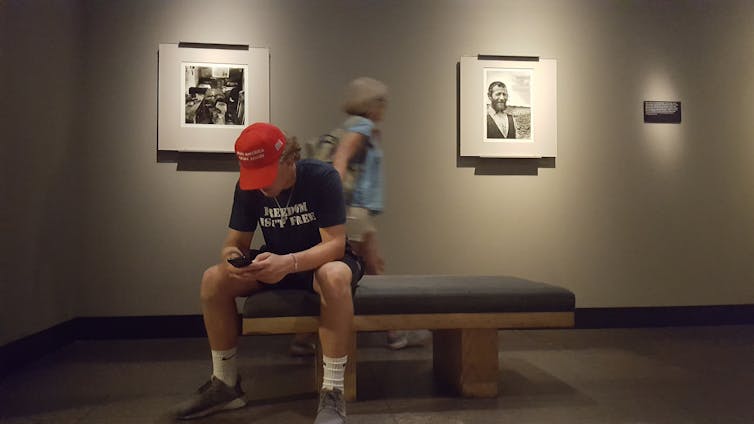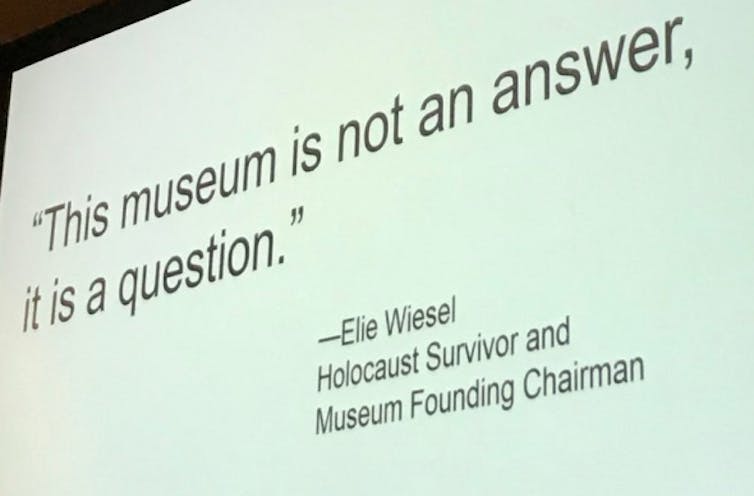Comparisons between US immigration policy and the Nazi period may not be helpful, but they are hard to avoid

The renowned Holocaust historian Deborah Lipstadt recently rejected comparisons between the Holocaust and the Trump administration’s separation of families at the southern border of the United States. “Equating the two,” she wrote in the Atlantic Monthly, “is not only historically wrong, it is also strategically wrong.”
Lipstadt argues that it is historically wrong because of the difference between mass killing and the separation of children from parents deemed illegal immigrants to the US. And it is strategically wrong, she believes, because it allows the policy’s defenders to dismiss criticisms as hyperbolic frenzy:
Glib comparisons to the Nazis provide the administration and its supporters with a chance to defend their position, something they do not deserve.
I agree with Lipstadt on the unhelpfulness of crude comparison – but based on my own recent experiences of Holocaust remembrance at the heart of American public space it is clear to me that this cannot be the end of the discussion.
Lipstadt’s article includes an argument about the specifics of Nazi policy based on a photograph included in the main exhibition of the United States Holocaust Memorial Museum in Washington DC. Taken by an SS officer, it is of Jewish deportees arriving at Birkenau camp, including a young women and an older woman and child. One of the people in the photograph survived the Holocaust and has since testified that she was the younger woman and the baby was hers. Her mother had taken it because they knew that had she claimed the baby, she and the infant would both have been sent to the death chamber. This reminds us that the Nazi policy was not separation but extermination.
By coincidence, the day The Atlantic published her article was the end of a week-long seminar I participated in at the museum with 20 other academics, and it was an event relevant to this story in ways that significantly complicate its conclusions.
On a formal level, it just happens that a key text that we were asked to read in advance of the seminar, Michael Rothberg’s Multidirectional Memory, includes in its introduction an argument against Lipstadt articulating very similar views about historical comparison in the 1990s. Rothberg’s worry was that Lipstadt’s protestations risked upholding a memory competition that “overrides other possibilities for thinking about the relation between different histories”.
But far more strikingly, we spent much of the week grappling with our group’s experience of walking through the Holocaust exhibitions surrounded by high school students wearing red “Make America Great Again” baseball caps.
One academic participant even got into a tense confrontation with a member of the public in the new Americans and the Holocaust exhibition over the precise question of comparisons with the Trump administration.
Questioning history
Walking around the Holocaust Memorial Museum – a building deliberately positioned to dialogue with the central monuments and architecture of American democracy – any attempt to avoid comparisons between the Nazi period and recent events at the Mexico border would have involved a herculean effort at compartmentalisation. One of my most vivid memories is of standing in the Hall of Witness among numerous children wearing MAGA caps under a banner that read: “This museum is not an answer. It is a question.”

Lipstadt is right that careless and hyperbolic comparisons are unhelpful – but it is the task of scholars to communicate and debate the complexity of entanglements between past and present. Events at the southern border are not an extermination – but they are driven by public opinion and policy decisions with clear parallels to other Nazi-era events that the museum highlights with unerring precision.
In the Americans and the Holocaust exhibition there are sharp and sustained criticisms of refugee policy during the era. One especially remarkable display records opinion polling in the US from November 1938, which logged 94% disapproval of German treatment of Jews combined with 71% disapproval of allowing more Jews into the United States. At the heart of this disparity is a sentiment that resonates with the contemporary determination that, as Trump put it: “The United States will not be a migrant camp.”
Context is all
Having now returned to the UK, these resonances transfer to my own national context with undimmed power to ask questions of how we navigate relationships between the 1930s and the present. Directly influenced by the museum in Washington DC, Britain is currently planning to build its own Holocaust memorial and learning centre at the heart of governmental space in Victoria Tower Gardens next to the Houses of Parliament.
Due for completion in 2021, the original commission document that proposed the site remarked that:
In debating the more challenging elements of Britain’s history – such as the refusal to accept more refugees or the questions over whether more could have been done to disrupt the Final Solution – Britain reflects on its responsibilities in the world today.
But this remark was relatively fleeting. More prominent were comforting assertions such as: “Britain remembers the way it proudly stood up to Hitler” – and, in the most recent government announcement of the memorial and learning centre’s design, any explicit mention of refugee policy has been dropped. The online press release’s only mention of migration is a generic link at the bottom of the page to “Visas and immigration”, offering a reminder of Theresa May’s vision that: “The aim is to create, here in Britain, a really hostile environment for illegal immigrants.”
When it comes to an event as ultimately extreme and emotive as the Holocaust, we should of course be wary of blunt and counterproductive comparisons. In this regard Lipstadt’s article offers a powerful corrective. But this is not the end of our task.
It is the task of historians to draw parallels, however uncomfortable. Nazism didn’t immediately descend into fully fledged terror in the Germany of the 1930s, it came in a series of legal and policy shifts. There were those, in Germany as well as in rest of the watching world – who strongly objected from the start to the laws that took away Jewish rights and protections and continued to oppose Hitler and his supporters as the nightmare unfolded. But there were also many people in whom Nazi rhetoric found all-too fertile ground.
![]() A similar dynamic is in operation today. The gradual “othering” of migrants to the US – and, indeed, of refugees in Europe and elsewhere – has the same feeling of an incremental downward spiral in the public’s humanity, and it is here that historians have a duty to draw comparisons rather than simply seeking to police the border between historical events.
A similar dynamic is in operation today. The gradual “othering” of migrants to the US – and, indeed, of refugees in Europe and elsewhere – has the same feeling of an incremental downward spiral in the public’s humanity, and it is here that historians have a duty to draw comparisons rather than simply seeking to police the border between historical events.